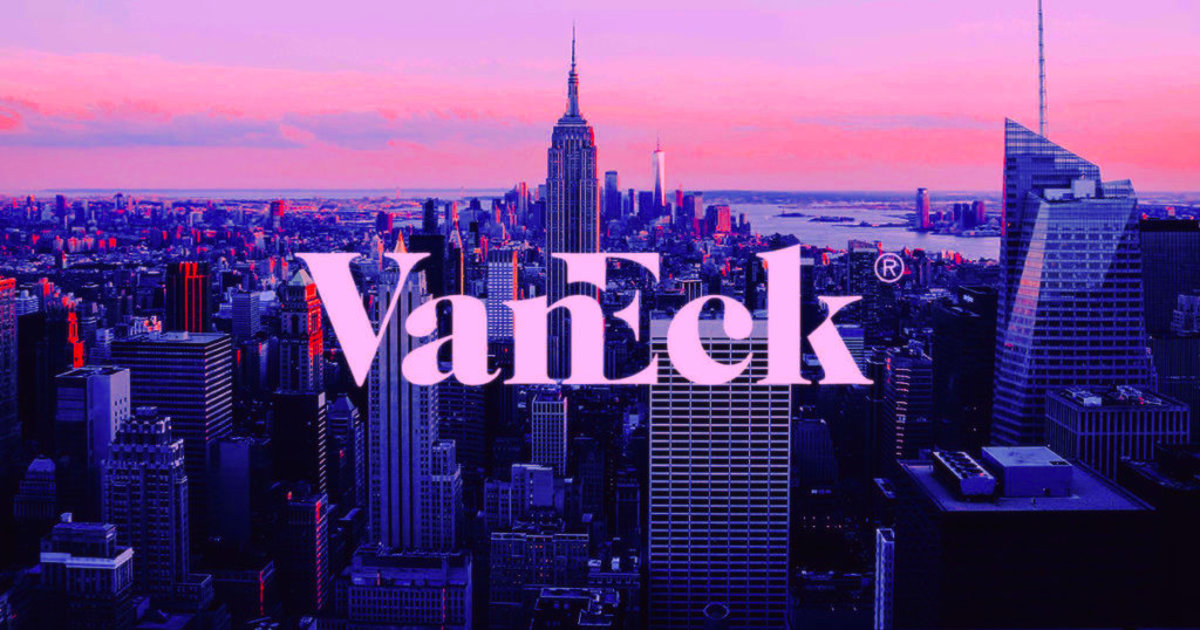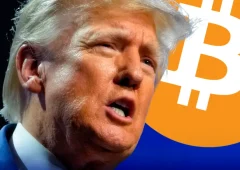VanEck Files for ETF Targeting Blockchain and Digital Asset Growth
16.01.2025 18:00 2 min. read Alexander Zdravkov
VanEck has submitted a proposal to the U.S. Securities and Exchange Commission (SEC) for its new “On-chain Economy” ETF, aiming to provide exposure to the digital asset ecosystem without directly investing in cryptocurrencies.
This fund seeks to target companies and financial instruments linked to blockchain and crypto innovation.
The ETF plans to allocate 80% of its assets to businesses and products tied to digital transformation. These include crypto exchanges, payment platforms, mining operations, and companies that hold or generate revenue from digital assets. Additionally, the fund will invest in products like commodity futures and other exchange-traded instruments designed to offer indirect exposure to cryptocurrencies. VanEck emphasized that the fund will not hold digital assets directly, instead focusing on associated sectors and instruments.
This latest initiative builds on VanEck’s history of exploring crypto-related ETFs. While some projects, such as its Ethereum futures ETF, were discontinued due to underperformance, others, like its Solana ETF proposal, reflect the firm’s continued focus on the crypto space. The new fund’s design also mirrors similar efforts by competitors like Bitwise, which has launched ETFs targeting companies with substantial Bitcoin holdings.
To optimize its structure, VanEck plans to use a Cayman Islands subsidiary for investing in digital asset-related instruments. This setup aims to comply with U.S. tax regulations, limiting subsidiary investments to 25% of the fund’s total assets each fiscal quarter.
This filing comes as the SEC continues to evaluate cryptocurrency ETFs, recently delaying a decision on Bitwise’s Crypto Index ETF to March. Despite regulatory hurdles, VanEck’s proposed fund highlights the growing interest in financial products tied to the expanding digital asset economy. By focusing on companies driving blockchain innovation, the ETF seeks to offer investors a way to engage with the crypto industry’s growth without directly holding cryptocurrencies.
-
1
Chinese Tech Firms Turn to Crypto for Treasury Diversification
26.06.2025 17:00 1 min. read -
2
FTX Halts Recovery Payments in 49 Countries: Here Is the List
04.07.2025 18:00 2 min. read -
3
What Are the Key Trends in European Consumer Payments for 2024?
29.06.2025 8:00 2 min. read -
4
What Brian Armstrong’s New Stats Reveal About Institutional Crypto Growth
29.06.2025 15:00 2 min. read -
5
Donald Trump Signs “One Big Beautiful Bill”: How It Can Reshape the Crypto Market
05.07.2025 9:56 2 min. read
U.S. Public Pension Giant Boosts Palantir and Strategy Holdings in Q2
According to a report by Barron’s, the Ohio Public Employees Retirement System (OPERS) made notable adjustments to its portfolio in Q2 2025, significantly increasing exposure to Palantir and Strategy while cutting back on Lyft.
Key Crypto Events to Watch in the Next Months
As crypto markets gain momentum heading into the second half of 2025, a series of pivotal regulatory and macroeconomic events are poised to shape sentiment, liquidity, and price action across the space.
Here is Why Stablecoins Are Booming, According to Tether CEO
In a recent interview with Bankless, Tether CEO Paolo Ardoino shed light on the growing adoption of stablecoins like USDT, linking their rise to global economic instability and shifting generational dynamics.
U.S. Dollar Comes Onchain as GENIUS Act Ushers in Digital Era
In a statement that marks a major policy shift, U.S. Treasury Secretary Scott Bessent confirmed that blockchain technologies will play a central role in the future of American payments, with the U.S. dollar officially moving “onchain.”
-
1
Chinese Tech Firms Turn to Crypto for Treasury Diversification
26.06.2025 17:00 1 min. read -
2
FTX Halts Recovery Payments in 49 Countries: Here Is the List
04.07.2025 18:00 2 min. read -
3
What Are the Key Trends in European Consumer Payments for 2024?
29.06.2025 8:00 2 min. read -
4
What Brian Armstrong’s New Stats Reveal About Institutional Crypto Growth
29.06.2025 15:00 2 min. read -
5
Donald Trump Signs “One Big Beautiful Bill”: How It Can Reshape the Crypto Market
05.07.2025 9:56 2 min. read


